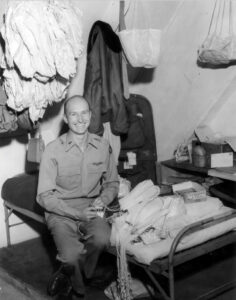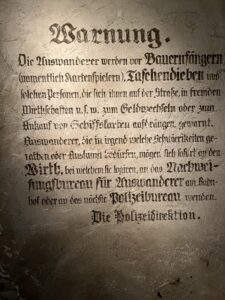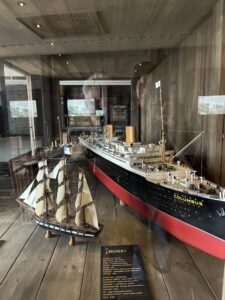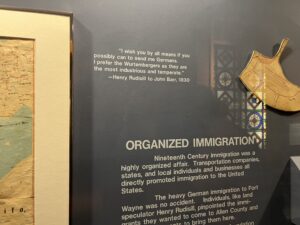
In my most successful novel in Germany, When the Skies Rained Freedom, about the post-war period in Berlin and the Berlin Airlift, which celebrates its 75th anniversary this year, I could add many important details thanks to my eyewitness and survivor, Loni Tiemann. Last week, I had the honor not only of visiting her, but also of meeting the daughter of the famous candy bomber, Gail Halvorsen, Denise Williams. Denise and her husband were visiting Loni, and we spent a very enjoyable afternoon together.
 In 1948, Gail Halversen fastened gum and chocolate on handkerchief-parachutes and dropped them from his plane to the children of Berlin, providing much joy and hope. Other pilots soon took up his good deed, so that thousands of children were waiting for the little treats every day. In this time of deprivation, when two million Berliners were kept hostage by Stalin and didn’t know where their next meal would come from, Gail’s compassion and support meant love and hope.
In 1948, Gail Halversen fastened gum and chocolate on handkerchief-parachutes and dropped them from his plane to the children of Berlin, providing much joy and hope. Other pilots soon took up his good deed, so that thousands of children were waiting for the little treats every day. In this time of deprivation, when two million Berliners were kept hostage by Stalin and didn’t know where their next meal would come from, Gail’s compassion and support meant love and hope.
I want to mention again that the successful airlift of the Western Allies to Berlin saved Germany’s democracy at the time. Without the efforts of the brave pilots and the brilliant organisation of the Americans and the British, Berlin would have fallen into Russian hands. Who knows, the rest of Germany might have followed. On May 12, 1949, the Airlift officially ended and West Berlin was free again. Just 11 days later, on May 23, 1949, our German constitution was adopted.
New Emigration Novel
 This month sees the publication of the emigration story The Life We Remember: Between Worlds, in which a German woman and an Irish man play the leading roles. It is about poverty, loss of homeland, hope for a new life and, of course, love. You know that I like to travel to the places where the story takes place and see the landscape and surroundings for myself, take in the air and thus better imagine what life might have been like back then.
This month sees the publication of the emigration story The Life We Remember: Between Worlds, in which a German woman and an Irish man play the leading roles. It is about poverty, loss of homeland, hope for a new life and, of course, love. You know that I like to travel to the places where the story takes place and see the landscape and surroundings for myself, take in the air and thus better imagine what life might have been like back then.
 Of course, I did a lot of research for this novel, too, reading books, letters and documents about that time. In addition, I was in the USA last year, in Fort Wayne and Bloomington, Indiana, to visit the historical museums there and learn a lot.
Of course, I did a lot of research for this novel, too, reading books, letters and documents about that time. In addition, I was in the USA last year, in Fort Wayne and Bloomington, Indiana, to visit the historical museums there and learn a lot.
 Many Germans moved to Fort Wayne, for example, from the mid-19th century. Streets, parks and buildings received German names, but were changed during/after World War I. In December, I went to Bremerhaven, to the Auswandererhaus and the Historical Museum. I also learned a lot there. And then I had the opportunity to visit Heilbronn and Löwenstein in Württemberg, because that’s where one of my protagonists, Mina Peters, comes from.
Many Germans moved to Fort Wayne, for example, from the mid-19th century. Streets, parks and buildings received German names, but were changed during/after World War I. In December, I went to Bremerhaven, to the Auswandererhaus and the Historical Museum. I also learned a lot there. And then I had the opportunity to visit Heilbronn and Löwenstein in Württemberg, because that’s where one of my protagonists, Mina Peters, comes from.
A New Project Is in the Works
Yes, the emigration story is finished and a new novel is already in the works. You know how fascinated I am about World War II and how I write from different perspectives and with different topics. Well, I’ve been working on this new story for more than two years and it’s still far from finished, but now I want to complete it in the spring. The Third Reich used millions of forced laborers to power its failing industries, especially in the Ruhr area, many who did not survive the terrible conditions. I don’t have a title yet.
The story takes place in Bochum, in the industrial Ruhr area from 1943, and is about Marie, a young woman who looks after a few goats on a small farm and thus keeps her head above water until the SS confiscates the animals. Marie ends up working in the office of the Schwarzenberg coal mine. On her first day, she has to register a group of newly arrived angry and exhausted French forced laborers. At first, everything goes wrong, but then one of the Frenchmen comes to her aid…
